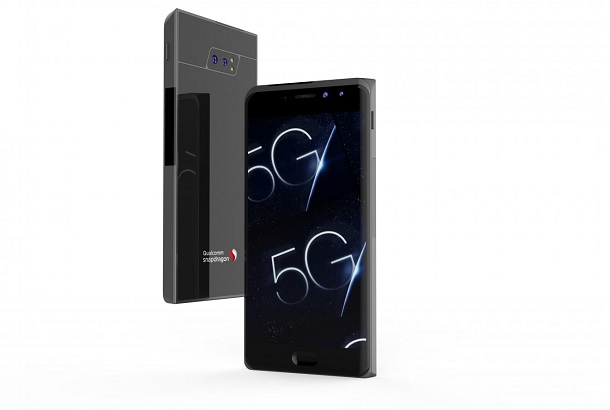Qualcomm has hit gigabit speeds on its 5G modem chipset for mobile devices and previewed a reference design for next generation smartphones.
The demonstration was held at the company’s labs in San Diego, United States, hitting the download speeds by tapping several 100MHz 5G carriers and using 28GHz mmWave spectrum.
The showcase used Qualcomm’s X50 5G modem chipset, which it launched last year, as well as its SDR051 mmWave RF transceiver integrated circuit (IC).
Qualcomm also used Keysight Technologies’ new 5G Protocol R&D Toolset and UXM 5G Wireless Test Platform.
Cristiano Amon, Executive Vice-President, Qualcomm Technologies, described the trial as a “major milestone” in the development of 5G but there was no word on when the reference design would be made available for smartphone manufacturers.
Dimitris Mavrakis, Research Director at ABI Research, said Qualcomm’s breakthrough was a “major step” in the move towards deploying 5G networks. He added: “It is still very early days for 5G in millimetre wave frequencies and many issues need to be resolved before early networks are switched on and compatible devices are in the hands of consumers.
“However, the Qualcomm announcement will likely create a new wave of innovation in the chipset and device ecosystem, which will eventually feed into commercial devices.
“Qualcomm’s reference design is perhaps a more important announcement in that aspect; using this design, vendors can now create compatible devices and develop products for 5G.”
Today’s announcement was one amid a flurry of news from its 4G/5G Summit in Hong Kong. The chipset maker also revealed it was working with Verizon and Novatel Wireless on 5G New Radio technology as well as future over-the-air (OTA) field trials based on forthcoming 3GPP Release 15 specifications.
The initial focus will be on 5G NR in the 28GHz and 39GHz bands, with the aim to deliver a technology platform for mobile and home broadband access.
Qualcomm cited the now commonplace use cases that will be powered by the multi-gigabit per second speeds, such as HD video, virtual and augmented reality and connected cloud computing.
The OTA trials will start next year, once Release 15 has been locked down. The telcos will also use 5G NR MIMO with beamforming and beamtracking to ensure robust connectivity.
Qualcomm said it hopes to garner further learnings from the trials to drive the develoment of its Snapdragon X50 5G NR suite of modems. It is already working with Nokia on NR field trials and interoperability testing.
Verizon is planning a “full scale” 5G commercial network deployment by the end of the decade.
[Read more: Qualcomm hails US regulator investigation into Apple as patent war continues]
Meanwhile, Qualcomm also unveiled the Snapdragon 636, a new mobile platform aimed at delivering increased performance, sharper gaming quality and a boosted display.
It said the platform delivers a 40 percent increase in device performance, thanks to its Kyro 260 CPU. It also supports ultra-wide HD displays and better quality visibility in low and high lighting conditions.
The 636’s Adreno 509 GPU also increases gaming and browsing performance by 10 percent, when compared to previous generation products, Qualcomm added.
Other features of the platform are peak download speeds of 600MBPs, thanks to Qualcomm’s Snapdragon X12 LTE modem, and picture quality support of up to 24MP.
The platform will begin shipping next month.
Kedar Kondap, Vice President, Product Management, Qualcomm Technologies, said: “The introduction of the Snapdragon 636 Mobile Platform allows OEMs to enjoy a smooth transition from the Snapdragon 660 and 630 Mobile Platforms while supporting the deployment of superior functionality and performance to end users.
“Manufacturers can use the same modem and camera architecture to enable fast and efficient testing and calibration, cutting down on significant resources or time normally required when developing products on brand new platforms.”
Finally, Qualcomm launched a new suite of devices supporting connectivity in the 600MHz frequency band, which it said would help operators meet greater indoor penetration and enhanced outdoor coverage requirements.
The range will hit the market in late 2017.


